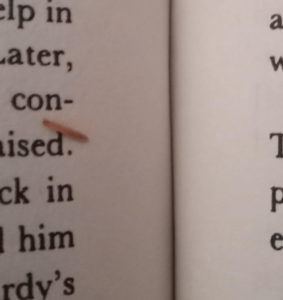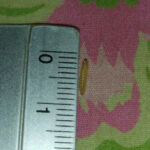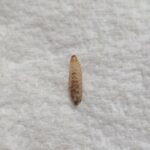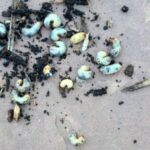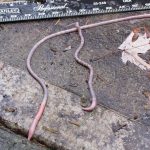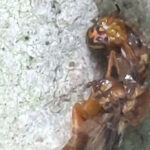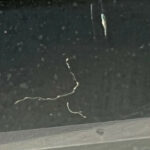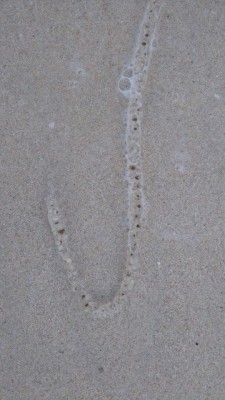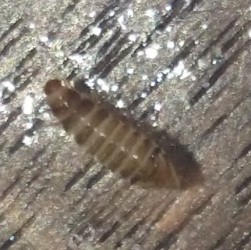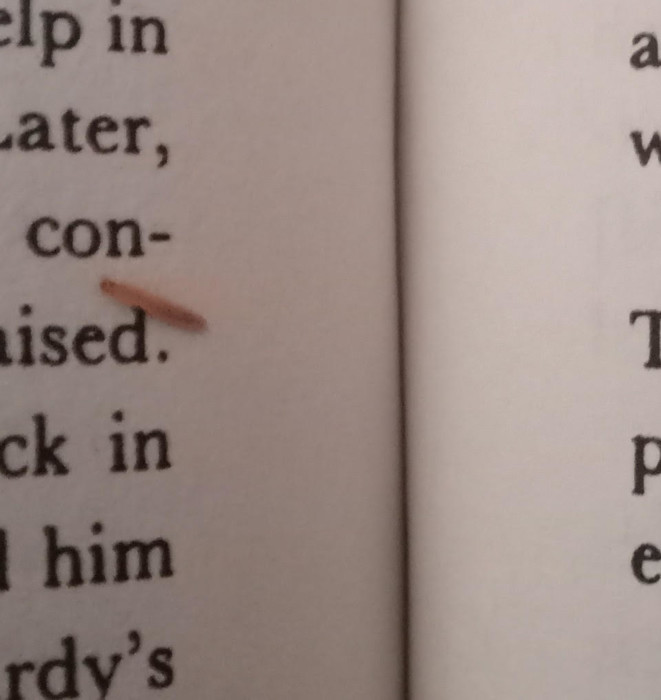
“Is this an inch worm or a bookworm (if that exists)?” asks this reader in his submission concerning the tiny, white worm-like creature pictured below. “It had legs (maybe 4-6) and as shown in the picture I found it in my book.”
“Hopefully the picture is clear enough”, he continues. “I didn’t know what to do with it so I safely put it outside.” In response to this, we want to firstly say that while the picture is clear enough that we can see the larva’s white body and darker head and rear, it could definitely be sharper. We cannot see these “4-6” legs that he mentions. That said, we understand that it is very difficult to take sharp photos of organisms of this size: we can see from the size comparison to the letters that this creature is truly minuscule.
Secondly, we want to commend our reader for doing the responsible thing and moving the creature outside, despite not knowing what it was. A lot of people’s first instinct would have been to kill it, which is understandable but unfortunate.
Now, there are indeed ‘bookworms’, though this is actually an umbrella term for a whole host of various insects that might bore through or feed on a book, including certain species of moths and beetles, as well as mites.
At first we thought the creature our reader found might be a moth larva, specifically a clothes moth larva, as it is not unheard of for them to go inside books in search of food. However, taking into account the number of legs it has, it is more likely that this is a beetle larva of some kind.
Unfortunately, given its small size, we will not be able to provide an identification of its specific species. Given its generic appearance at this stage of its maturation, it could really be anything.
Either way, most beetle larvae are harmless to humans and pets, so our reader need not fear the larvae, though he does not give the impression that he does. Still, when moving unknown species of creatures, it is best to avoid skin-to-skin contact and instead brush them gently up onto a dustpan.
In conclusion, we think that the white worm-like creature our reader found in his book is a beetle larva. In any case, it was good of him to move the critter outside, and should he find any more of these, we suggest he do the same. We hope this article helps, and we wish him the very best!
All About Worms is always free, always reader-supported. Your tips via CashApp, Venmo, or Paypal are appreciated! Receipts will come from ISIPP Publishing.
You might also find these guys interesting!

